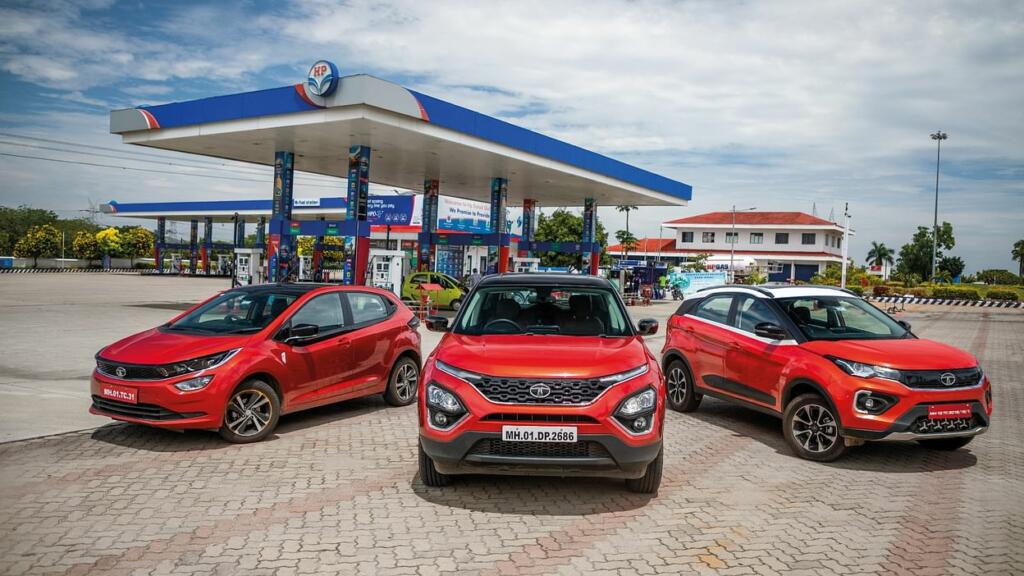When it comes to iconic Indian brands, nothing can beat Tata. Once a product is branded as a Tata product, it creates a strong patriotic sentiment around that commodity. Naturally, the cars manufactured by Tata also exude a similar sense. Tata is right at the brink of staging a massive turnaround in the passenger vehicles segment. At the root of its renaissance is the focus on better designs, better looks and a renewed ability to spark interest in the Indian consumer. Let’s find out how Tata’s intriguing passenger vehicles journey is changing.
Initial success in the late 1990s and early 2000s:
If you are a 90s kid, there is a high chance that you travelled in a Tata Indica, Tata Indigo or a Tata Sumo to your relative’s wedding or some other family function.
Tata Sumo is an SUV that was produced by Tata from 1994 to 2019. The 5-door SUV was an instant success and sold 1,00,000 units by 1997. Later Tata released new Sumo versions like Sumo Victa and Sumo Gold.
The other successful Tata branded car was Tata Indica. When the hatchback was released in 1998, Ratan Tata had said, “It would have the size of the Maruti Zen, the internal dimensions of an Ambassador and come at the price of a Maruti 800 with the running cost of a diesel.”
Ratan Tata was right, which is why Tata was able to sell around 1.2 million units of the hatchback within one decade of its introduction.
The decline:
Tata Motors generated a lot of euphoria in the late 1990s. However, a decade later, it became clear that it won’t be able to beat Suzuki-promoted Maruti in terms of market share. Other automobile players in the cars segment like Mahindra & Mahindra and Hyundai had left Tata behind. Tata Motors had to make do with single-digit market share for quite some time.
The main reason behind the decline of Tata in the passenger vehicles market was the lack of new designs and impressive models. The sales of Indica and Indigo tanked, whereas Tata Sumo faced stiff competition from other brands in the SUV segment like Mahindra Scorpio, Mahindra Bolero, and Toyota Qualis.
Meanwhile, Tata couldn’t roll out any impressive or exciting prospects. Tata Nano couldn’t succeed and mild face-lifts in older cars like Tata Sumo or Tata Indica didn’t evoke consumer interest.
New designs and better sales:
Things started improving for Tata once again after it acquired two iconic luxury carmakers- Jaguar and Land Rover in 2008. It exhibited that Tata Motors wasn’t going anywhere. With these two acquisitions, Tata was able to lay its hands on the latest technology and foreign markets.
Soon, Tata picked up its passenger vehicles market game with the launch of new and sleek designs. Pratap Bose, former head of design at Tata Motors, led the revolutionary change at Tata Motors.
Bose said, “We were not in the consideration for most car buyers, and that is what we had to change first,” states Mr Pratap Bose, Tata Motors’ design chief.” So, he brought in the ‘Impact Design’ philosophy at Tata Motors to produce cars that evoke consumer interest.
Bose added, “Hence, the Impact design philosophy was born. It was meant to make an instant impact. Seeing the car’s photo should instantly garner interest, (and) it is only then that they (the buyers) would take test drives, and that would convert to buying decisions.”
Tata Altroz, Tata Nexon and Tata Harrier are all products of the Impact Design philosophy. Now, Tata is looking at Impact Design 3.0 language that will give more digital surfacing in Tata cars.
By giving new and impressive designs, Tata has managed to replace Mahindra & Mahindra as the third-largest seller of passenger vehicles in the Indian market. It enjoys a healthy 8.2% market share. Tata Motors has set an ambitious target- double-digit market share.
At the end of the day, India is a middle-income country and in some pockets, car ownership remains a luxury. Many people avoid a car that doesn’t pack an expensive design even if it offers a good ride and driving comfort. Tata Motors seems to have realised the importance of sleek designs and this is exactly the secret of its newfound success in the passenger vehicles market.
